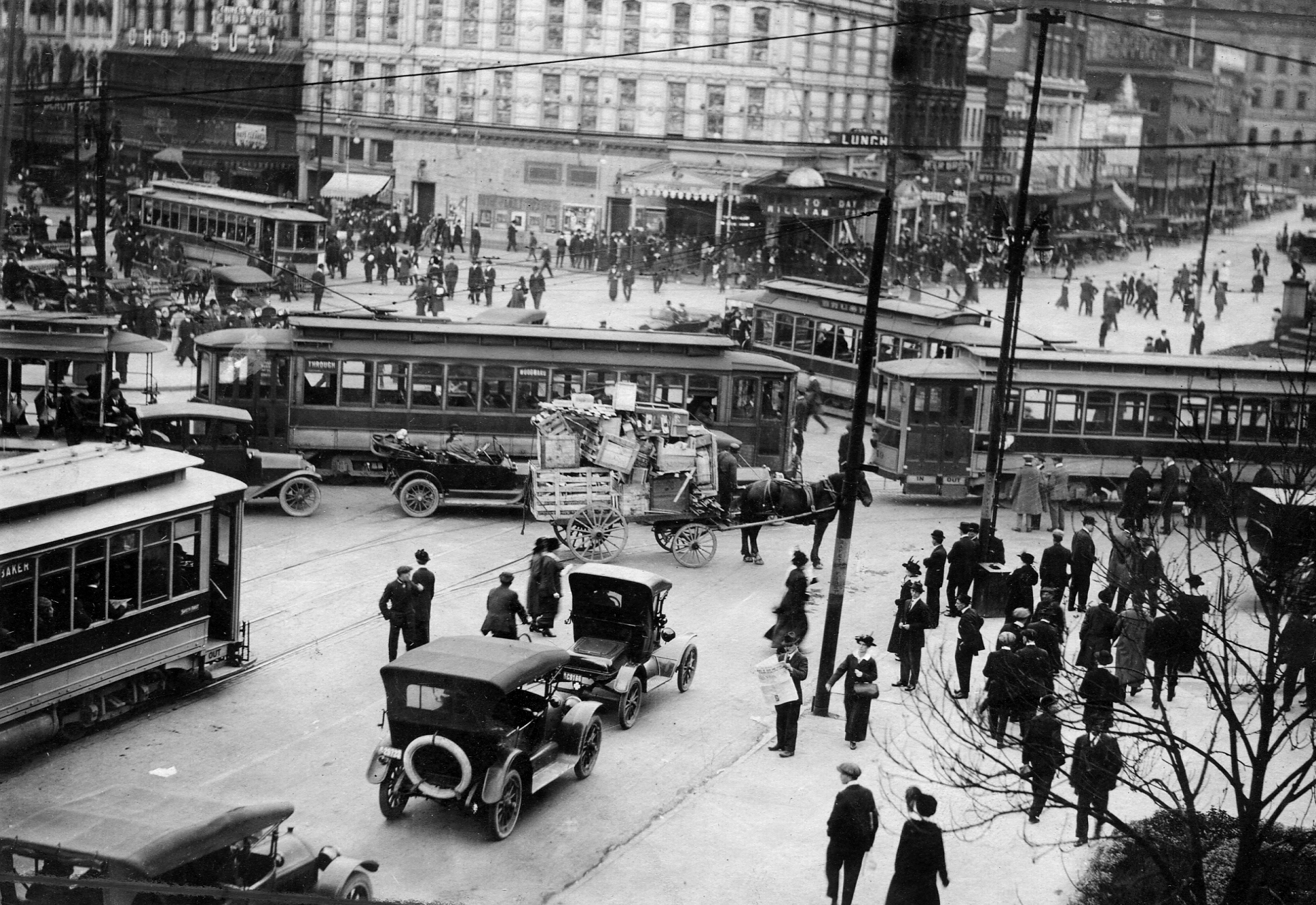Over the next few decades, we will witness a revolution on our roads. Thanks to advancing technology, the vehicles of tomorrow will have the capacity to be digitally connected and driverless. By 2050, the way we reach our destinations will be unrecognisable. In our lifetime, driverless vehicles are set to shake things up on a comparable scale to the introduction of powered vehicles. Underestimating the preparation they will require risks being unable to reap the benefits.
A photograph of Detroit from 1917 depicts the disorderly transition to motorisation from horse and cart. At a chaotic junction, horse-drawn carriages, cars, pedestrians and trams swarm together, with no lanes, stop signs or traffic signals to guide them. It would take some years before road management caught up to contend with this challenge. If we’re to make the most of all that connected and driverless car technology can offer us, it’s exactly these rules, signs, signals and road space management that we need to take into account.

To date, much thought has been given to the technology under the bonnet, but there has been less focus on how our roads should be adapted for the changes ahead. This led the National Infrastructure Commission to launch our Roads for the Future competition, the winners of which we announce today. Developed and run with Highways England and Innovate UK, the competition sought ideas for how the UK’s road network could be adapted to maximise the opportunities presented by these new vehicles.
Today we revealed that Leeds City Council and Exeter’s City Science have been chosen as joint winners, with each of them being awarded £25,000 from a dedicated prize fund of £50,000.
The entry from Leeds City Council explored digital connectivity, suggesting how data generated from cars could be used to improve traffic light systems, allowing highway authorities to better manage traffic on their roads and prevent tailbacks. City Science looked at driverless vehicles and put together a proposal that sets out how sections of roads in urban areas could initially be dedicated to them, as part of a wider programme to kick-start their take-up and integrate them safely into the existing transport network. Both entries focus on feasible ways to develop the use of these technologies and begin their integration.
Connected and driverless vehicles are projected to bring numerous benefits. They could help create new travel opportunities, free up time focused on driving and help to improve safety. It is thought that they could also combat congestion by increasing road capacity, enabling higher speed limits and shorter journey times, and releasing street space currently used for parking. This will only happen if we think carefully about how to achieve this.
We hope that our competition will start a valuable conversation about what the roads of the future might look like. I hope the Government and highway authorities will seize the opportunity to consider how this work can be taken to the next stage. We will need systems to take advantage of connectivity and clear strategies and governance for integrating driverless and driver assistance vehicles onto our roads, which should be established as they make their debut. The UK is considered a world-leader in the development of connected and autonomous transport. We must now ensure that this innovation is enabled by a road network that is equally cutting-edge.




